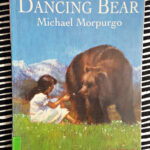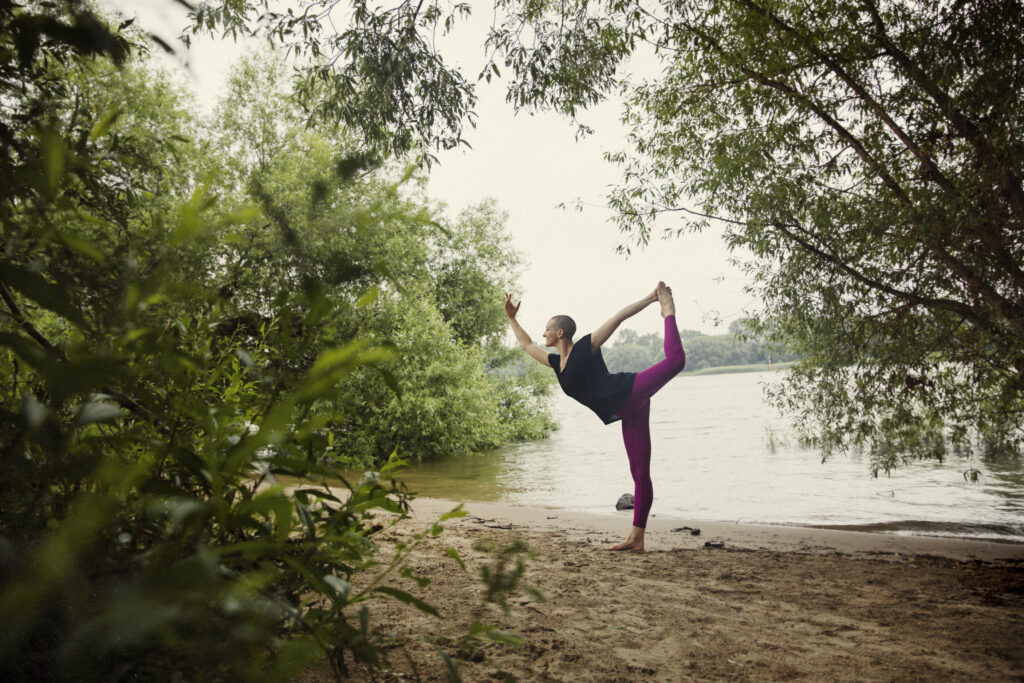 dancer pose rhine river cologne germany
dancer pose rhine river cologne germany
The Natarajasana, often called Dancer Pose or King Dancer Pose, is more than just a beautiful yoga posture; it’s a powerful asana that embodies grace, strength, and balance. This iconic and challenging yoga pose invites practitioners to explore their courage, compassion, and inner rhythm. Rooted in rich symbolism and offering a myriad of physical and mental benefits, Dancer Pose is a rewarding addition to any yoga practice.
Inspired by the Hindu deity Shiva in his Nataraj form – the cosmic dancer who destroys and creates universes – Dancer Pose mirrors Shiva’s dynamic energy and balance. Classically, Shiva-as-Nataraj is depicted dancing within a ring of fire, standing on a dwarf, with a cobra around his neck and dreadlocks swirling. This imagery is rich with meaning, which we will explore further.
Dancer Pose itself is a standing backbend that requires balance and focus. In its full expression, it involves lifting one leg behind you, grasping the foot with your hand, and arching forward while extending the opposite arm forward. It can be initially daunting, but with the right approach and modifications, Dancer Pose can become accessible and deeply beneficial for practitioners of all levels.
This guide will delve into the intricacies of Dancer Pose, exploring its history, step-by-step instructions, variations, benefits, and spiritual significance. Whether you are a seasoned yogi or just beginning your journey, understanding Dancer Pose can enrich your practice and help you discover new dimensions of strength and flexibility.
Important Considerations Before Attempting Dancer Pose
Before attempting any variation of Dancer Pose, it’s crucial to practice with awareness and caution. It’s important to note that I am not a medical professional, and the information shared here is based on my personal experience and recommendations from yoga experts. Always consult with your healthcare provider before starting any new exercise program, especially if you have pre-existing health conditions.
According to yoga expert Mark Stephens in Teaching Yoga, Natarajasana can pose risks to the lower back, hamstrings, the knee of the standing leg, and shoulders, particularly if there is instability or impingement. Therefore, listen attentively to your body’s signals and proceed slowly and mindfully.
Step-by-Step Guide: How to Get Into Dancer Pose (Natarajasana)
Jessamyn Stanley, in her book Every Body Yoga, emphasizes that both supported and unsupported versions of Natarajasana are achievable. Using props like a strap can significantly aid in accessing and deepening the pose. A yoga strap, belt, towel, or even a dog leash can be used to extend your reach and make the pose more accessible. Additionally, practicing near a wall or sturdy chair can provide balance support if needed.
Here’s a breakdown of how to get into Dancer Pose, adapted from Jessamyn Stanley’s instructions:
- Start in Mountain Pose (Tadasana): Stand tall with your feet hip-width apart, grounding down through all four corners of your feet. Engage your core and lengthen your spine.
- Shift Weight and Bend Knee: Shift your weight onto your right foot. Bend your left knee, bringing your left heel towards your left buttock.
- Grasp the Foot: Reach back with your left hand and grasp the inside or outside of your left foot or ankle. Ensure you are holding firmly but not straining.
- Lift and Extend: Engage your left leg muscles and begin to lift your left thigh away from the floor, drawing your left foot away from your body.
- Reach Forward: Sweep your right arm forward and upwards, extending through your fingertips. Keep your hips squared forward as much as possible.
- Deepen the Backbend: As you lift your left leg higher, gently lean your torso forward, softening your heart and chest towards the front. Press your tailbone down and engage your core to protect your lower back.
- Hold and Breathe: Maintain the pose for a few breaths, focusing on your balance and breath. Remember to keep a slight bend in your standing (right) knee if needed.
- Release and Repeat: Slowly release the pose, returning to Mountain Pose. Repeat on the other side, switching legs.
Using a Strap for Dancer Pose:
If you find it challenging to reach your foot, a strap can be incredibly helpful:
- Loop the Strap: Create a loop in your yoga strap large enough to comfortably hold your foot.
- Place Strap on Foot: Following steps 1 and 2 above, place the loop of the strap around your left foot. Hold the strap in your left hand.
- Proceed with Pose: Continue with steps 4-8, using the strap to help lift and extend your leg. Adjust your grip on the strap as needed to deepen the pose while maintaining control.
Mark Stephens offers slightly different cues in Teaching Yoga, emphasizing specific actions for stability and alignment:
- From Tadasana: Flex your right knee and draw your right foot towards your right hip.
- Clasp and Rotate: Grasp your right foot with your right hand. Rotate your right elbow inwards and upwards as you extend your right leg back and up from the hip.
- Extend and Reach: Lift your left arm overhead. You can bend your left elbow and optionally reach for your right foot with your left hand for a deeper variation, if accessible.
Stephens highlights key elements for both teachers and students to focus on for optimal alignment and safety in Dancer Pose:
- Pada Bandha (Foot Connection): Maintain a strong connection of the sole of your standing foot to the floor. This stabilizes the foot and ankle joint and provides a solid foundation.
- Standing Leg Strength: Keep the standing leg straight and strong, but avoid locking the knee. Maintain a micro-bend to protect the joint.
- Pelvis Alignment: Strive to keep the pelvis level to create a symmetrical base for spinal extension.
- Chest Opening: Press the tailbone down, expand the chest, and draw the lower tips of the shoulder blades forward and upwards to open the heart center.
- Breath and Focus: If balanced and comfortable, you can gently release the crown of your head towards the arch of your lifted foot and draw the elbows closer together. Breathe deeply throughout the pose.
Variations and Modifications of Dancer Pose
Dancer Pose offers numerous variations and modifications to suit different levels and needs. These variations allow you to experience the essence of the pose while respecting your body’s current capabilities.
Here are a few accessible variations:
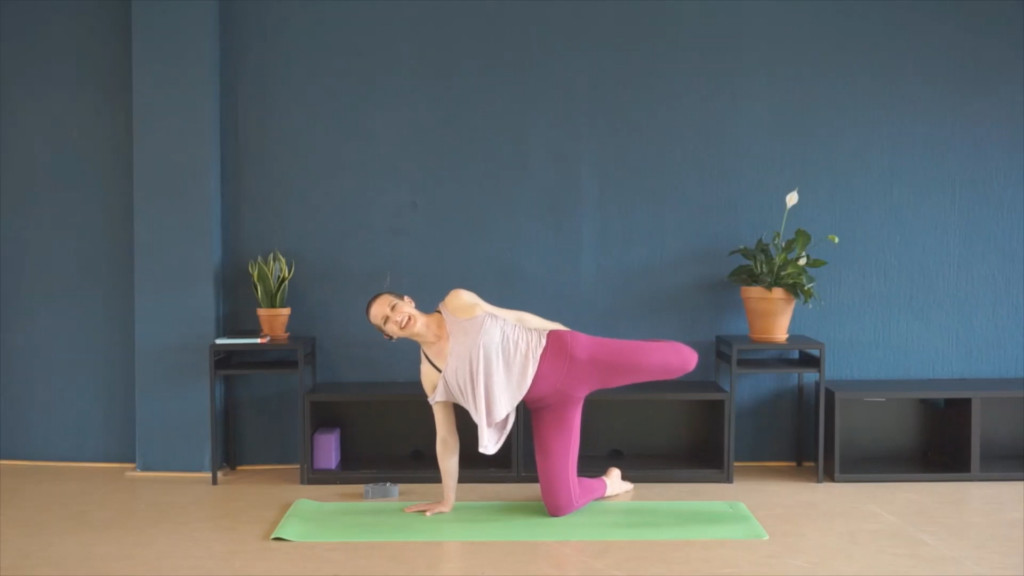 low side dancer pose variation
low side dancer pose variation
Low Side Dancer: This variation, also known as “Low Side Dancer Pose,” is a gentler way to experience the stretch and balance of Dancer Pose. Performed on the knees and one hand, it offers a different perspective while still engaging similar muscle groups. A strap can also be used in this variation for added support and depth.
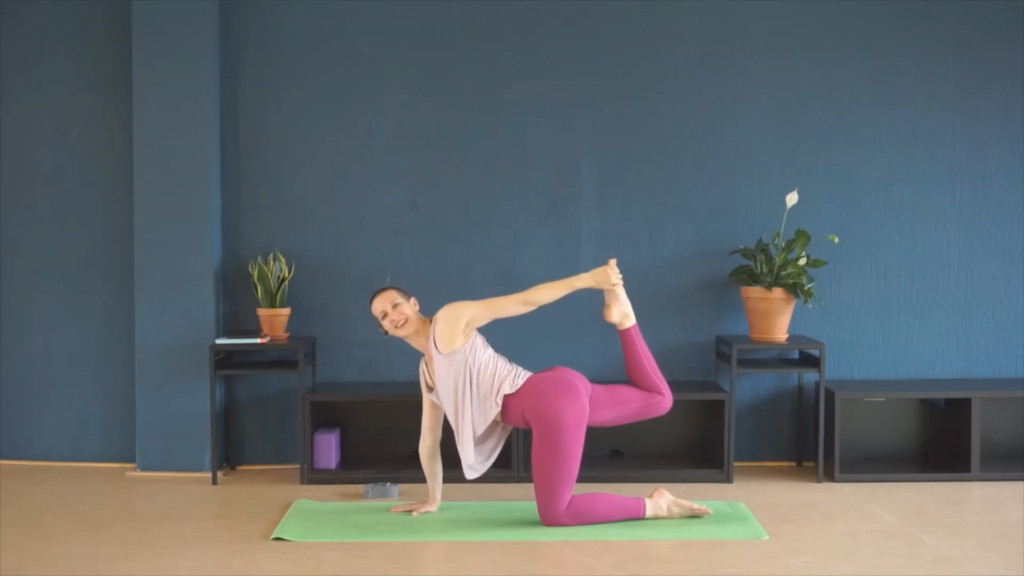 low twisted dancer pose variation
low twisted dancer pose variation
Low Twisted Dancer: “Low Twisted Dancer Pose” introduces a gentle twist to the side dancer variation, offering a unique stretch and balance challenge. Like the low side dancer, a strap can be used to help access the foot and deepen the stretch.
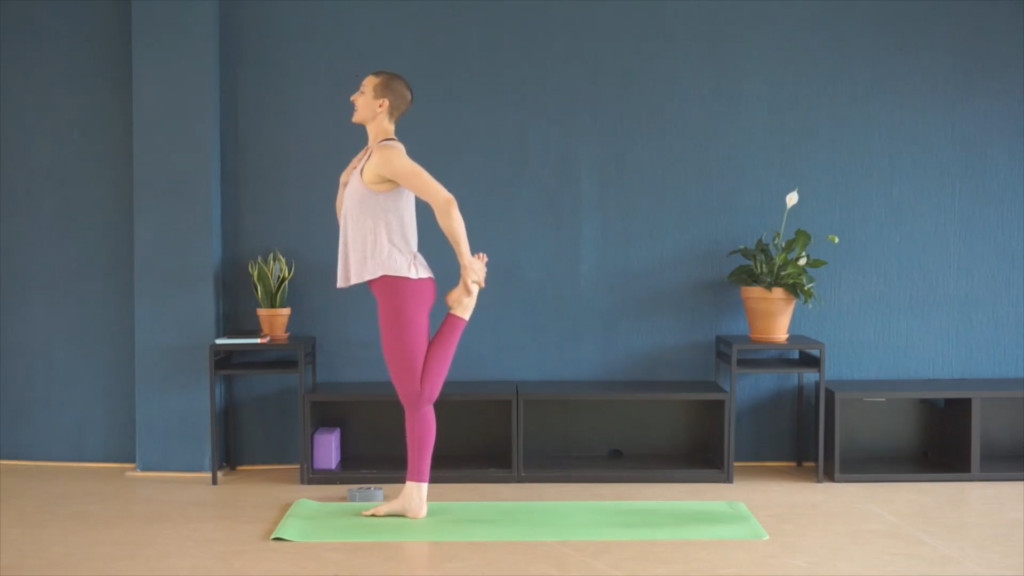 dancer pose hand heart quad stretch
dancer pose hand heart quad stretch
Standing Quad Stretch (Hand to Foot): This is a foundational modification that can be used as a standalone pose or as a preparatory step towards full Dancer Pose. Standing on one leg and holding the foot of the lifted leg stretches the quadriceps and improves balance. You can use a wall or chair for support and a strap to reach the foot if needed. This pose helps develop balance and opens the chest, preparing the body for the deeper backbend of Dancer Pose.
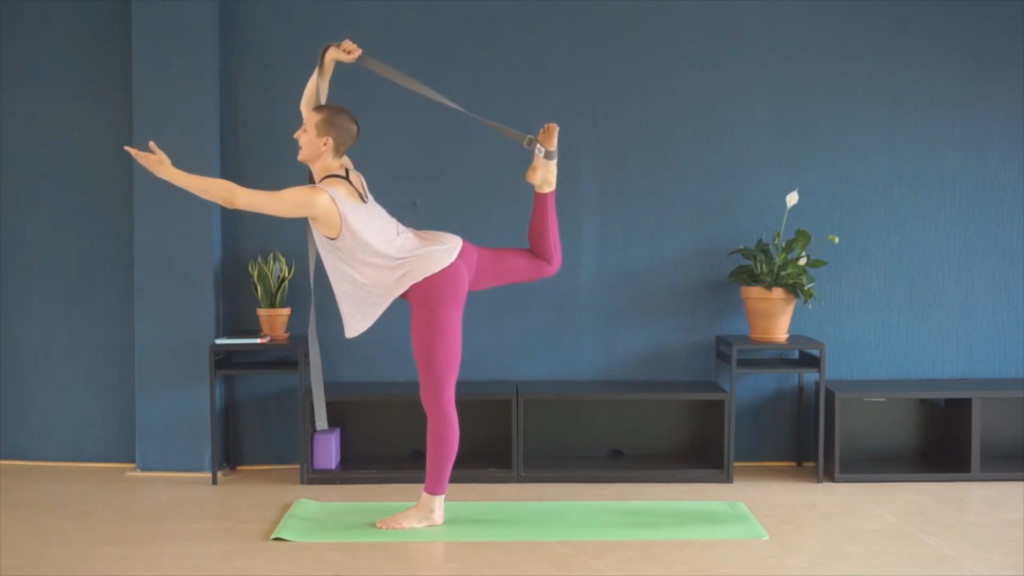 dancer pose with yoga strap support
dancer pose with yoga strap support
Dancer Pose with Strap: As demonstrated earlier, using a yoga strap is a significant modification that makes the full standing Dancer Pose more accessible. It allows you to experience the pose’s benefits even if you lack the flexibility to reach your foot comfortably.
Additional Tips for Variations:
- Wall Support: Practice Dancer Pose facing or sideways to a wall for balance support.
- Gaze (Drishti): Directing your gaze to a fixed, non-moving point can significantly improve balance.
- Hand Mudras: Experiment with different hand positions (mudras) with your extended arm to deepen your focus and intention.
Remember, there’s no single “perfect” Dancer Pose. The beauty of yoga lies in adapting the poses to your individual body and practice. Explore these variations and modifications to find what resonates with you and allows you to experience the pose’s benefits safely and effectively.
The Mythological Story Behind Natarajasana
To truly appreciate Dancer Pose, it’s enriching to understand the story of Nataraja, the Lord of the Dance, from Hindu mythology. As described in Myths of the Asanas: The Stories at the Heart of the Yoga Tradition by Alanna Kaivalya, Shiva Rea, and Manorama, Nataraja is one of Shiva’s many forms, representing him as the cosmic dancer. His dance is not just an aesthetic expression but a powerful force of creation and destruction, symbolizing the cyclical nature of the universe.
Shiva, as part of the Hindu trinity, embodies various aspects of the divine. Nataraja is perhaps his most well-known persona. The iconic depiction of Nataraja includes snakes around his neck, hair standing on end, balancing atop a dwarf, and encircled by a ring of fire.
The ring of fire, or samsara, symbolizes the cycle of birth, life, death, and rebirth – the constant flux of existence that we are all a part of. Shiva’s dance within this ring represents his mastery over this cycle.
The cobra around Nataraja’s neck symbolizes avidya, the illusion or misunderstanding of our true nature – the belief that we are separate from the divine. Shiva, having conquered avidya through enlightened knowledge, carries the symbolic flame of this knowledge in his palm, offering a remedy to this fundamental illusion.
What Dancer Pose Teaches Us: Physical and Mental Benefits
Dancer Pose is not only a physical feat but also a profound teacher. As Kaivalya and Rea point out, the physical challenges of Dancer Pose often mirror our psychological boundaries. The elements of backbending and balancing inherent in the pose can evoke fear, as they require openness and vulnerability.
In the chakra system, fear is often associated with the heart chakra. Opening the heart center in Dancer Pose provides an opportunity to release stored fear and cultivate courage. Similarly, balancing in the pose challenges our innate fear of falling, encouraging bravery and a sense of freedom.
In yoga classes, balance and backbending are often developed progressively, allowing practitioners to gradually expand their comfort zones. Dancer Pose integrates these skills, demanding both stability and flexibility. It strengthens core muscles, legs, and ankles, while improving flexibility in the hips, back, and shoulders.
Even experienced dancers and athletes may find Dancer Pose challenging. It requires a unique combination of strength, flexibility, and balance that may not come naturally, even to those accustomed to physical discipline. Personal limitations, such as lower back stiffness or past injuries, can present individual challenges. The practice of Dancer Pose, like all yoga, is about navigating these challenges with awareness and acceptance.
The courage to attempt Dancer Pose, especially for beginners, is commendable. It reflects a willingness to confront physical and mental boundaries and embrace the learning process.
Both the myth of Nataraja and the practice of Dancer Pose itself teach us to face our fears, embrace change, and release attachments. They guide us towards liberating ourselves and connecting with our true nature and the universe.
Spiritual Benefits of Dancer Pose Practice
On a deeper, spiritual level, practicing Dancer Pose, and other challenging asanas, can bring us face to face with avidya and another key concept, abhinivesha. In the Yoga Sutras, Patanjali outlines five kleshas, or obstacles to freedom. Avidya, misunderstanding our true nature, is the first, and abhinivesha, the fear of death, is the most potent.
Death, in this context, represents the ultimate change, and change in various forms is a constant in life. Shiva, as the lord of death and destruction, understands that change, even radical change like death, is the only true constant in the universe.
One of the most valuable lessons yoga offers, particularly through poses like Dancer Pose, is how to navigate change with grace and equanimity. This involves cultivating self-awareness and self-knowledge through compassionate self-study, reflective practice, and meditation. As Dianne Bondy and Kat Heagberg emphasize in Yoga Where You Are, compassionate self-study allows us to meet ourselves without judgment, accepting ourselves exactly as we are in the present moment.
This compassionate self-study can be cultivated through practices like meditation and journaling, as well as through mindful yoga practice. Reflective practices, such as journaling, can deepen self-awareness. Meditation can cultivate inner stillness and presence. These practices, combined with the physical discipline of asana, enhance our ability to navigate life’s inevitable changes.
Ultimately, the goal is greater freedom: freedom of movement, courage to face the unknown, and compassion for ourselves and others. Dancer Pose, in its physical and symbolic dimensions, guides us towards this liberation.
Just as Shiva dances freely, unburdened by the fear of change, we too can strive to “dance like Shiva,” embracing the ever-flowing current of life with courage and joy. This freedom arises from understanding that nothing is permanent, and that change is an inherent part of the cosmic dance.
Questions for Reflection
Consider these questions to deepen your understanding and experience of Dancer Pose:
- What physical obstacles do you encounter when practicing Dancer Pose?
- Which modifications or variations make the pose more accessible for you?
- What other yoga poses or movements do you generally find challenging?
- What emotions arise for you when facing these challenges?
- How can modifications or variations help you access the benefits of these challenging poses or activities?
- How can a yoga teacher or trusted guide support your practice and growth?
Blythe Stephens, MFA & Bliss Catalyst
she/her or they/them
A Blythe Coach: Dance Education & Coaching move through life with balance, grace, & power
DISCLAIMER: A Blythe Coach recommends that you consult your physician regarding the applicability of any recommendations and follow all safety instructions before beginning any exercise program. When participating in any exercise or exercise program, there is the possibility of physical injury. If you engage in this exercise or exercise program, you agree that you do so at your own risk, are voluntarily participating in these activities, assume all risk of injury to yourself.

